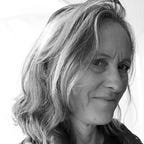Covid-19, A Year Later
Nearly a year ago, I was sitting at the cramped nurse’s station in the operating room where I work, hearing about the first community transmission of Covid-19 in California. “It’s here,” a surgeon reported to me. “We’ve got it.”
We all knew what “it” was but had no idea what it meant to have it in our midst. This was the end of February. A few weeks earlier, I’d read about the Diamond Princess cruise ship whose passengers had been confirmed to have Covid-19. The ship remained quarantined at first, then, ten days later, all of its passengers were allowed to disembark. At the time, I raged at my friends and family about the mistake in letting these folks go without any testing or contact tracing. “This is not how you prevent a pandemic. This is not how you contain the virus.” In fact, Covid-19 was already so prevalent across the globe, even containing those passengers would have failed us. Indeed, by late February Covid-19 was right there in my hospital, thousands of miles away from the Diamond Princess and its passengers.
That morning, I looked into our hospital census, trying to detect where this infected patient may have landed, or how sick he or she might have been. One patient, maybe two, I thought. That was manageable. Except I also knew enough about infectious disease to know that one or two patients in Southern California also meant that the virus had achieved community spread. In other words, we no longer knew how the people who had it got it, where it had come from, or who else might be contagious. One or two patients would quicky become ten or twenty, making infection control difficult. Maybe not, I told myself. Maybe we could escape the worst.
Within two weeks, there were cases in Washington State and more at my own hospital and still we all somehow imagined we could prevent disaster. The same sense of disbelief I felt when I heard about the first cases carried me thought into March, when we went on lock-down and our hospital cancelled all elective surgeries. I became a Covid Queen, an expert in PAPR’s and PPE and how to handle the flow of Covid positive patients into and out of the operating room. I educated staff on infection control and what we might see in the coming months and with every day that passed, our numbers increasing into April and May, I remembered the naïve disbelief of that February day when I heard, “It’s here, we’ve got it,” and I told myself, stupidly, that one or two patients might not spell disaster. We would fight back, we would handle it, we would manage.
This winter, our Covid census reached nearly 400 patients a day in my hospital alone. Our ICU beds reached 130% capacity and we cancelled any procedures that weren’t urgent or emergent. This was how we spent Thanksgiving, and Christmas. On New Year’s Eve, I saw that same surgeon from last February. We shook our heads and said, “What can you do? Some day it will be better.” And we both agreed that we have no interest in being called healthcare heroes. “That’s a red ‘H’ you see in my chest,” I said. “It’s bloody and raw and I’m done.”
The human toll of Covid-19 — from death, illness, delayed care and burn-out — is incalculable. I have never felt so stressed, resentful, worn out. I’m still the Covid Queen. But I can’t hike with my husband on my days off because I am too angry when I see people on the trails without masks. Covid deniers are in our ICU, intubated, ventilated and paralyzed.
A year later, I worry about myself and my colleagues, what has been demanded of us and what the consequences are. “One day at a time,” we keep saying to one another, hoping that the downward trend in our numbers holds true. This is what I could not have envisioned, that February day when I heard about our first two patients. How frozen, inured, and numb we would become, and how, at the same time, we would find a way to keep doing it, fighting back, day after day.
